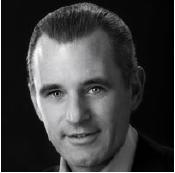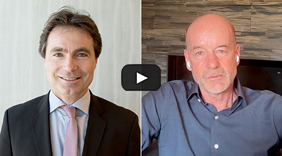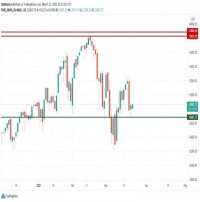|
Alternative investment boutique Taylor Investment Advisors recently launched a multi-strategy mutual fund. We caught up with co-founder Kevin McDonald to discuss his recent efforts. Mark Melin / Opalesque: Tell me about your firm and what was the need that you saw in the investment landscape that led you in the direction of offering a managed futures mutual fund? Kevin F. McDonald: Taylor Investment Advisors is a boutique alternative investment management and advisory firm that has a long history of relationships with the RIA community, as well as with institutions and large family offices. At the time, these relationships were increasingly expressing frustration with the investment tools available to them when constructing and managing portfolios for themselves and their clients. 
Kevin F. McDonald, co founder of Taylor Investment Advisors, discusses strategy diversity.
Historically, these advisors would use Treasury bonds to balance the equity risk in their client portfolios, but with interest rates at record lows and serious concerns about a bond bubble and inflation risk, they were looking for new tools to accomplish their goals. At Taylor we had been allocating to managed futures for years and understood that they could be used quite effectively as both a return generator and portfolio diversifier. This was one segment of the investment industry that has a long and proven history of delivering attractive, non-correlated return streams, but has not been well understood by many RIAs or available to their clients in a structure they could easily access. As a result, we began an initiative to solve for these challenges of making an attractive, non-correlated managed futures strategy available to a broader universe of investors, by using a mutual fund structure. MM: You are a multi-strategy fund with one CTA. Address the strategies that you are going to deploy and how that operates. KM: The Taylor Xplor Managed Futures Strategy Fund utilizes a single CTA that implements a multi-strategy approach, as opposed to a fund of funds with multiple CTAs. Our single manager currently trades five distinct disciplines or strategies, including medium-term trend following, fundamental, countertrend, momentum and short-term pattern recognition. MM: Describe the differences between your momentum and pattern recognition strategies? KM: In our world, momentum is a sub-set of trend following. Trend following typically captures the move from point A to point B over the medium-term, while momentum is shorter term and captures the point in time where the velocity of a trend is increasing. Pattern recognition is a much shorter time frame, ranging from intra-day to several days. The pattern recognition strategy is important because it can help to dampen or offset volatility of longer-term trend following strategies that can struggle in sideways markets or during trend reversals. MM: How does this strategy compare to a standard fund of funds programs? KM: Overall, we felt like our approach was better, faster, and cheaper than a fund of funds structure. In our opinion a single CTA implementing multiple strategies (not just trend following) was more efficient, as the portfolio has fewer structural costs, less trading and potential slippage. Another benefit is a single CTA can allocate capital and manage risk in real time, as opposed to a fund of funds which may be rebalancing much less frequently. Finally, the overall cost structure is lower as a result of the efficiencies that a single manager has over a fund of funds. An example of potential cost savings occur when a single manager gets a signal to buy an asset like oil in one of the strategies (ie. trend) and a sell signal for oil in another strategy (ie. momentum), the signals offset one another and no trade is executed. However, in a fund of funds, with multiple managers, you could have some managers long oil and some short oil, with the net result being no exposure for the investor, yet they have incurred the trading costs and risks associated with getting in and out of the positions. Investors in alternatives today are becoming much more sophisticated in the way that they prefer to access the strategies. They are increasingly going direct into managers and strategies and less so through intermediaries like fund of funds. Therefore, we felt a single manager, implementing a multi-strategy investment approach was a better way for these investors to get direct, more concentrated exposure, while still achieving diversification of multiple strategies. We believe our structure is a cleaner, more efficient way for investors to get exposure to managed futures strategies, as long as we, as the mutual fund advisor, have done our job. MM: Can you discuss how your fund operates inside the managed futures required Controlled Foreign Corporation (CFC) structure? KM: We are using a CFC structure that has become a bit more common in the last couple of years. While it was not our creation, it is something that we have modeled our fund on. We allocate 25% of the fund's assets to our CFC which then invests into our underlying CTA and 75% is allocated to our fixed income sub-advisor BlackRock. Our objective for the fund is to give investors exposure to managed futures, therefore our fixed income strategy is a low duration, low risk portfolio. The target duration for the BlackRock portion of the portfolio is below two years, and is comprised of US Treasuries, government agencies along with investment grade fixed income. MM: What does that mean to tax treatment considerations? KM: The tax treatment will be a bit different than a direct investment in exchange traded futures. The tax benefits of futures contracts are effectively diluted by the CFC structure. However, we think that the tradeoff for investors to be able to get access to managed futures in a mutual fund format remains quite compelling. We are a strong believer in the value that managed futures and CTAs can provide to a traditional, equity dominated investment portfolios and think they will be increasingly used by RIAs in the future as a compliment to traditional long only strategies. The ticker symbols for Taylor's offerings are TMFAX and TMFIX. Mr. McDonald is the Co-Founder of Taylor Investment Advisors LP. He has served on the Investment Committee of Taylor Investment Advisors since the firm's inception in 2002 and has more than 19 years experience in the investment field. Prior to co-founding Taylor Investment Advisors, Mr. McDonald was a Director at Larch Lane Advisors, an alternative asset management firm specializing in multi-manager hedge fund portfolios, from 1999 to 2001. From 1994 to 1999, Mr. McDonald was a Vice President in the futures and options group at JP Morgan where he was responsible for developing and marketing investment strategies to hedge fund clients. From 1991 to 1994, Mr. McDonald was an Assistant Treasurer and proprietary fixed-income trader at BSI - AG, where he was involved in all aspects of the launch and investment activity of Swiss American Capital Management, a global macro hedge fund. Mr. McDonald began his career at Chemical Bank (a predecessor to JP Morgan Chase) where he was a credit analyst in the corporate finance group. He received his B.A. from the University of Virginia. |
|
This article was published in Opalesque Futures Intelligence.
|





 RSS
RSS











